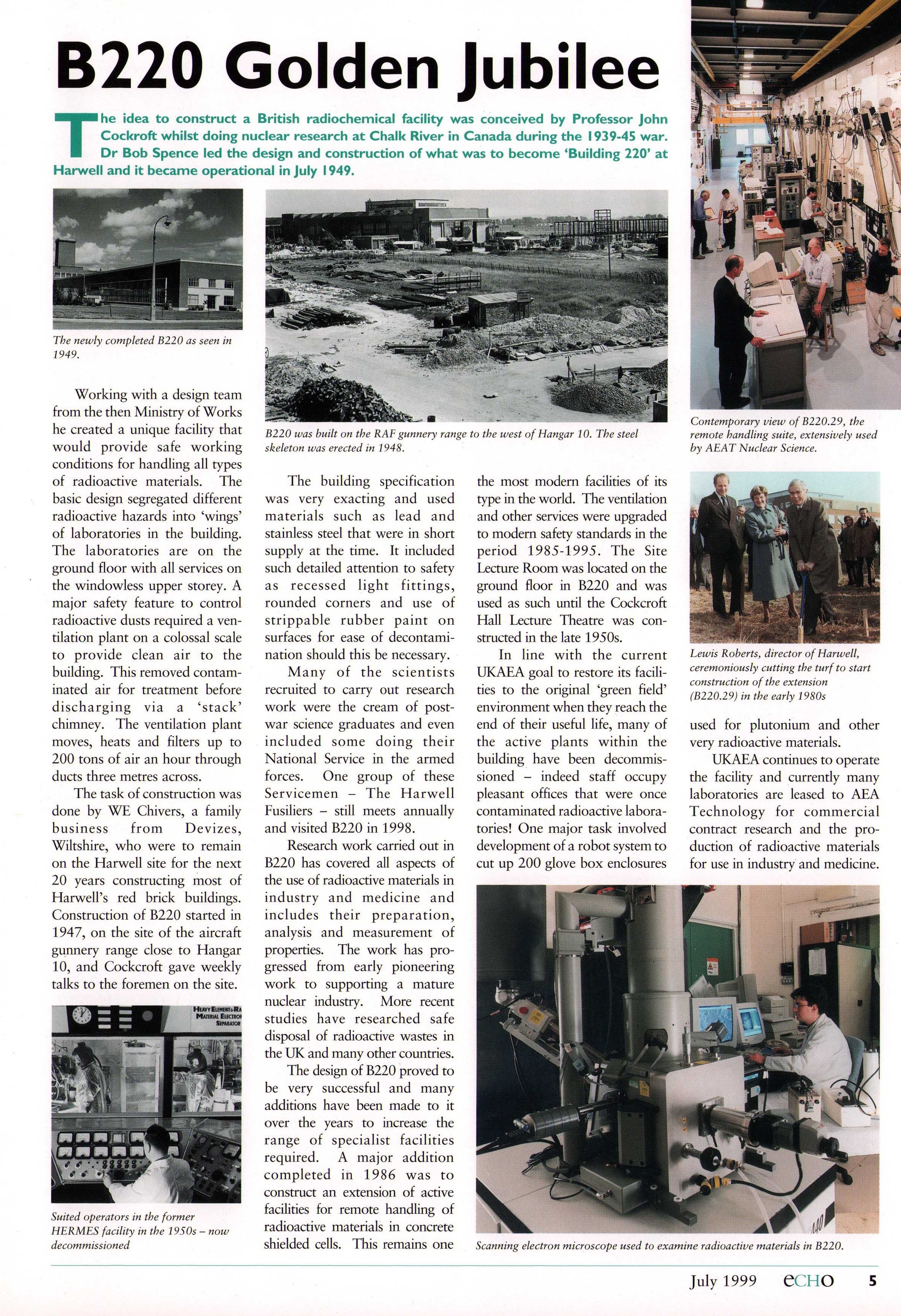


Working with a design team from the then Ministry of Works he created a unique facility that would provide safe working conditions for handling all types of radioactive materials. The basic design segregated different radioactive hazards into "wings" of laboratories in the building. The laboratories are on the ground floor with all services on the windowless upper storey. A major safety feature to control radioactive dusts required a ventilation plant on a colossal scale to provide clear air to the building. This removed contaminated air for treatment before discharging via a "stack" chimney. The ventilation plant moves, heats and filters up to 200 tons of air an hour through ducts three metres across.
The task of construction was done by WE Chivers, a family business from Devizes, Wiltshire, who were to remain on the Harwell site for the next 20 years constructing most of Harwell's red brick buildings. Construction of B220 started in 1947, on the site of the aircraft gunnery range close to Hangar 10, and Cockcroft gave weekly talks to the foremen on the site.
The building specification was very exacting and used materials such as lead and stainless steel that were in short supply at the time. It included such detailed attention to safety as recessed light fittings, rounded corners and user of strippable rubber paint on surfaces for ease of decontamination should this be necessary.
Many of the scientists recruited to carry out research work were the cream of post-war science graduates and even included some doing their National Service in the armed forces. One group of these Servicemen -- The Harwell Fusiliers -- still meets annually and visited B220 in 1998.
Research work carried out in B220 has covered all aspects of the use of radioactive materials in industry and medicine and includes their preparation, analysis and measurement of properties. The work has progressed from early pioneering work to supporting a mature nuclear industry. More recent studies have researched safe disposal of radioactive wastes in the UK and many other countries.
The design of B220 proved to be very successful and many additions have been made to it over the years to increase the range of specialist facilities required. A major addition completed in 1986 was to construct an extension of active facilities for remote handling of radioactive materials in concrete shielded cells. This remains one of the most modern facilities of its type in the world. The ventilation and other services were upgraded to modern safety standards in the period 1985-1995. The Site Lecture Room was located on the ground floor in B220 and was used as such until the Cockcroft Hall Lecture Theatre was constructed in the late 1950s.
In line with the current UKAEA goal to restore its facilities to the original "green field" environment when they reach the end of their useful life, many of the active plants within the building have been decommissioned -- indeed staff occupy pleasant offices that were once contaminated radioactive laboratories! One major task involved development of a robot system to cut up 200 glove box enclosures used for plutonium and other very radioactive materials.
UKAEA continues to operate the facility and currently many laboratories are leased to AEA Technology for commercial contract research and the production of radioactive materials for use in industry and medicine.